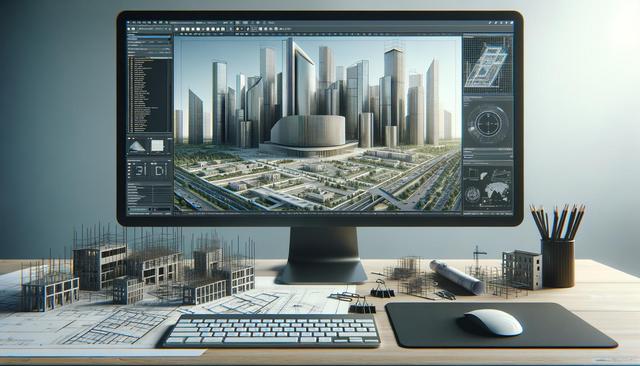Understanding the Role of Construction Software
Construction software plays a critical role in streamlining various aspects of the building process, from project planning to execution. These digital tools are designed to help architects, engineers, contractors, and project managers manage resources, timelines, and budgets more effectively. One of the significant advancements in this field is the integration of 3D building design software, which allows professionals to visualize projects in great detail before construction even begins.
By moving away from traditional 2D drawings, 3D building design enables stakeholders to view a structure from multiple angles and perspectives. This not only improves collaboration among teams but also helps in identifying potential issues early in the design phase. As a result, construction software reduces costly mistakes and rework, promoting a smoother project workflow.
Key Features of 3D Building Design Software
3D building design software offers a range of features tailored to meet the demands of the construction industry. These tools go beyond simple modeling to provide detailed simulations and structural analysis. Some of the most useful features include:
- Real-time rendering for lifelike visualizations
- Integration with Building Information Modeling (BIM) systems
- Comprehensive libraries of construction materials and components
- Tools for structural load and stress analysis
- Collaboration features for team-based editing
These capabilities allow design teams to create more accurate and detailed blueprints, which are crucial for large-scale projects. Being able to simulate how a building will perform under various conditions helps ensure compliance with safety regulations and enhances the durability of the final structure.
Improving Collaboration and Communication
One of the standout benefits of using advanced construction software is the improvement in team collaboration. With cloud-based platforms and integrated communication tools, all stakeholders can access the same project data in real-time. This reduces the chances of miscommunication and ensures that everyone is working from the same set of information.
3D building design software, in particular, enhances communication by providing a visual language that is easier to understand than technical drawings. Clients, contractors, and regulatory bodies can all interact with the model and provide feedback, which can be incorporated immediately. This leads to faster decision-making and a more transparent project development process.
Cost Efficiency and Risk Management
Investing in construction software can also lead to significant cost savings over the life of a project. By providing accurate estimates and timelines, these tools help prevent budget overruns and scheduling delays. The ability to foresee and address potential issues through 3D modeling and simulation reduces the need for expensive corrections during the construction phase.
Risk management is another area where these tools prove invaluable. By simulating various scenarios, teams can anticipate and mitigate risks related to structural integrity, environmental impact, and compliance. Construction software can also help with documentation and reporting, which are essential for meeting legal and regulatory requirements.
Choosing the Right Construction Software for Your Needs
Selecting the appropriate construction software depends on several factors, including the size and scope of your projects, team expertise, and specific features required. It’s important to evaluate software options based on:
- User interface and ease of use
- Compatibility with existing systems
- Availability of customer support and training resources
- Scalability to grow with your business
- Security features to protect sensitive data
While there are many options available, focusing on solutions that offer robust 3D building design capabilities can provide a competitive edge. These tools not only improve project visualization but also enhance overall efficiency and collaboration across teams.
Conclusion: Embracing Technology for Smarter Construction
For businesses involved in building and infrastructure projects, adopting construction software—particularly those with advanced 3D building design features—is no longer optional. These tools provide the clarity, accuracy, and coordination needed to deliver high-quality results on time and within budget. By integrating such technologies into their workflows, construction professionals can enhance productivity, reduce risks, and maintain a forward-thinking approach in an increasingly competitive market.












